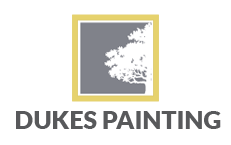Coating of machinery is very important in order to keep it free from corrosion. Powder coating for heavy machinery provides with maximum corrosion protection where it’s needed most. Powder coating is a coating that is applied as dry powder. The powder may be a thermoplastic or a thermoset polymer. It is used to create a hard finish that is tougher than conventional paint. Powder coating is mainly used for coating of metals, such as household appliances, aluminum extrusions.
There are two main categories of powder coatings: thermosets and thermoplastics. The thermosetting variety incorporates a cross-linker into the formulation. When the powder is baked, it reacts with other chemical groups in the powder to polymerize, improving the performance properties. The thermoplastic variety does not undergo any additional actions during the baking process, but rather only flows out into the final coating. The advantages of coating heavy machinery with powder are as follows:
Powder coatings do not emit volatile organic compounds. Environmentally friendly and energy and material efficient. Powder coating production lines produce less hazardous waste than conventional liquid coatings. No paint sludge is produced.
As Powder Coatings are solvent-free, no oven is required for the flash-off of solvents before curing.
Powder coatings can produce much thicker coatings than conventional liquid coatings without running or sagging. One-coat application: a thicker, more uniform coating can be obtained by a single coating than can be achieved with wet paint.
Powder coating is robust and has good chemical performance.
Powder coating overspray can be recycled and thus it is possible to achieve nearly 100% use of the coating.
Powder coating ready to use, no stirring, mixing or thinning is required as it may be with liquid paints. Some application equipment enables the powder to be fed directly from the box. The ease of using powder coating, both manually and with automatic application plant, gives a lower reject rate compared with wet paint. Rejects caused by damage after coating are also reduced due to the toughness of powder coatings.
Capex for a powder line is generally lower than for conventional liquid lines.
The space required is less than for liquid coatings equipments. The powder coating is easier to apply than wet paint and less operator training is necessary. Thus, to provide best protection against corrosion and for better performance of machinery, powder coating should be choice that should be opted for.
